コラム
落合憲弘
John Sypal
タカザワケンジ
なぎら健壱

It’s said that over 161,000 kofun - ancient, megalithic tombs- dot the Japanese archipelago.
Kofun were created to entomb people of status between 300 – 700 A.D., and the largest ones, thought to be tombs of emperors, are nearly 500 meters long, fortified by moats and UNESCO World Heritage Site status.
Seen in aerial photographs, these gigantic, keyhole-shaped forms, covered by lush vegetation and surrounded by water, make for a striking contrast against the dense urban patchwork they have been encircled by. These are the kofun that appear in Japanese history textbooks and Kansai area guidebooks. The Kofun seen in Hayato Nishumura’s series Mounds, however, do not impose themselves as dramatically on the landscape or contemporary memory. In their own way though they quietly confront viewers with the conundrum of duty to history and suburban, civic necessity.
Built in a variety of forms and sizes these less-spectacular tumuli blend into Japanese cities and modern lives. Most local kofun have a historical marker or placard of some sort- and while some are centerpieces of local parks or topped by Shinto shrines, it seems that for many others, a basic chain-link is often the sole physical buffer between the tomb of a forgotten powerful person and the clutter of a contemporary municipality.
It’s precisely the way that these tombs are wrapped in an odd mix of historical reverence (a mental buffer) and contemporary practicality that is of interest Nishimura- an interest that has taken him across Japan to document kofun in their current predicaments.
His June 2024 exhibition at RED Photo Gallery in Shinjuku was comprised of about a dozen new color pigment prints from his series. Taking take full advantage of the crispness of digital photography, Nishimura faces his subjects straightforwardly, framing them with just enough wit to prevent the images from becoming either too dry or poetic. His sense of distance allows space to demonstrate both how these kofun exist as time keeps marching on- marching often right up to, if not over and sometimes through the edges of, these tombs.
While the names and deeds of those laid to rest within have been lost to history we today can try to imagine the grave(!) importance they once commanded. Picturing the past is easier than seeing into the future. I mean, how could those who built these mounds and mourned the interred ever think that their kofun would ever be relegated to corners of local parks next to playground equipment or near a billboard for a love hotel?
What would they think? But then again, does it matter? I suspect that this is one of Nishimura’s questions. In the same vein, another question prompted by these photos is this: what of ours now, will remain?
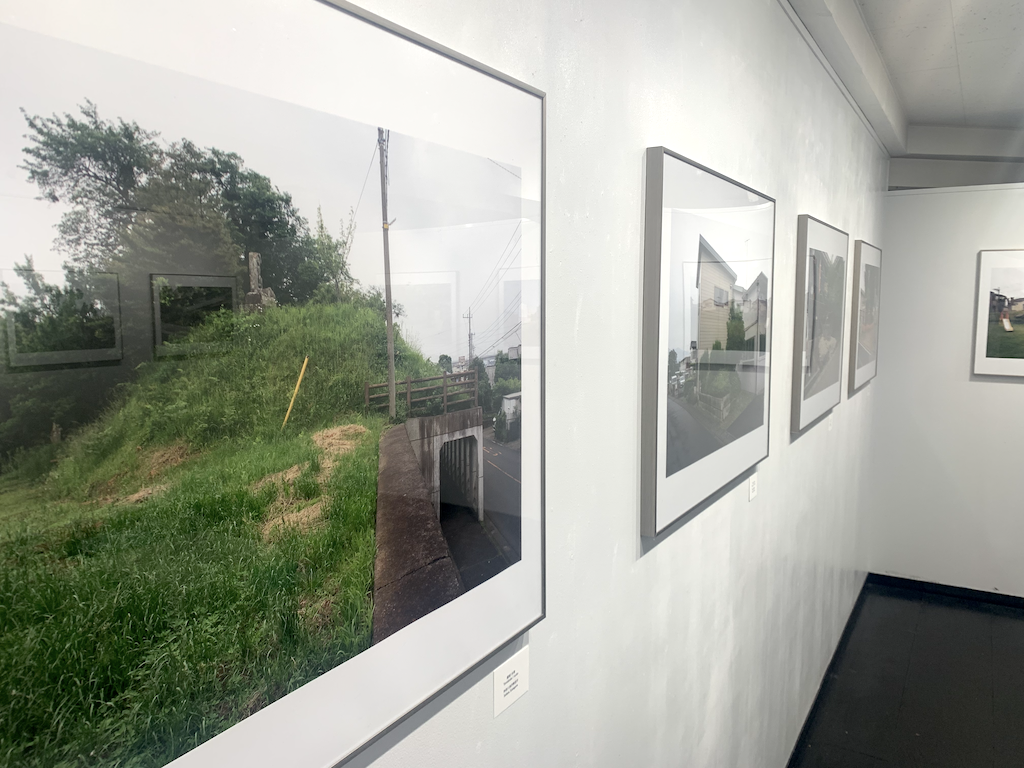
日本列島には16万1000基以上の古墳が点在していると言われています。古墳は西暦300年から700年の間に身分の高い人々を埋葬するために作られたもので、天皇の墓と考えられている最大のものは全長500メートル近くもあり、堀で要塞化され、ユネスコの世界遺産に守られています。航空写真で見ると、この巨大な鍵穴形古墳は、青々とした植物に覆われ、水に囲まれ、密集した都市のパッチワークとは対照的です。
古墳と聞くと、日本史の教科書や関西のガイドブックに掲載されたものをイメージすると思います。西村勇人さんの「Mounds」シリーズに見られる古墳は、風景や現代の記憶に劇的な印象を与えるものではありません。しかしこれらの写真はそれぞれの方法で、歴史に対する義務や、郊外、市民の必要性という難問を見る者に静かに突きつけています。
さまざまな形や大きさの古墳が日本の都市や、現代の生活に溶け込んでいます。古墳のほとんどには、何らかの歴史的な標識やプラカードが設置されています。地元の公園の目玉になっていたり、神社のてっぺんに位置するものもありますが、多くは「忘れられたかつての権力者の墓」と「自治体の漠然とした場所」の間として物理的な緩衝材になっていることが多いようです。これらの古墳が、歴史への畏敬(精神的な緩衝材)と現代の実用性という奇妙なミックスに包まれていることにこそ、西村さんは興味をもっているといいます。
西村さんは自身の興味から、現代における古墳の苦境を記録するため日本全国を旅してきました。
2024年6月、新宿のRED Photo Galleryで開催された写真展「Mounds」は、西村さんのシリーズから約12点の新しいカラーの顔料プリントで構成されていました。
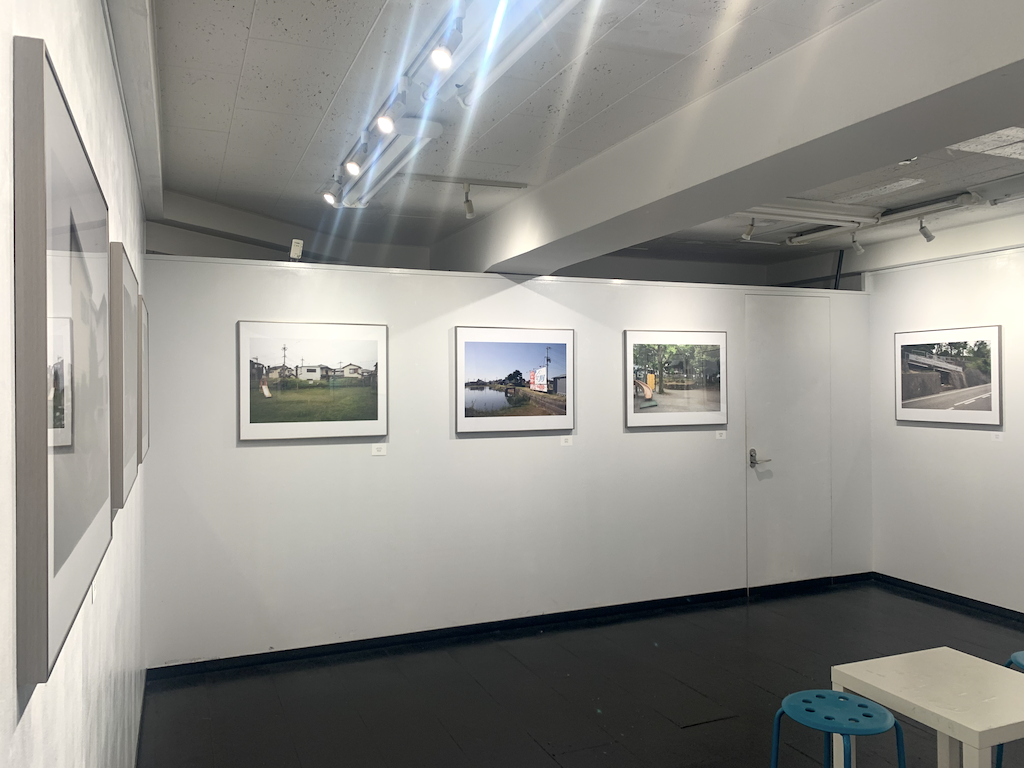
デジタル写真の鮮明さを最大限に生かし、西村さんは被写体とまっすぐに向き合い、イメージがドライになりすぎず、また詩的になりすぎないよう、ウィットに富んだフレーミングを施しています。
西村さんの距離感は、古墳がどのように存在し、どのように時間が流れ続けているのか。古墳のすぐ近くまで、時には古墳の縁を越えて、また時には古墳の中を突き進むように、その両方を示す空間を作り出していました。
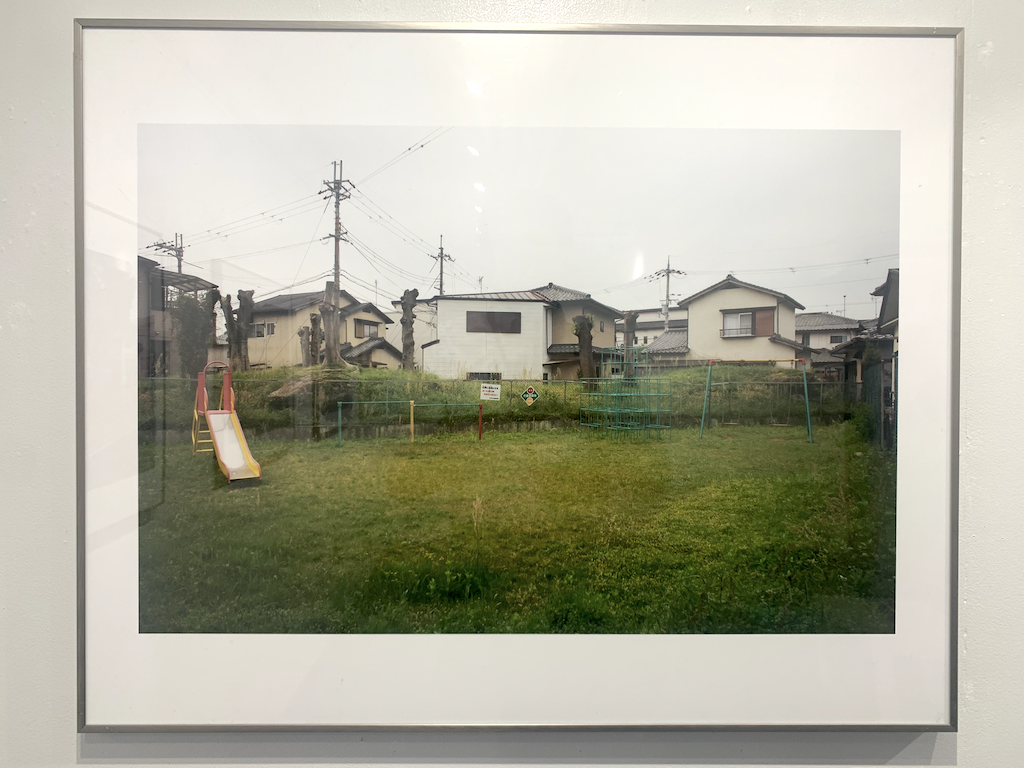
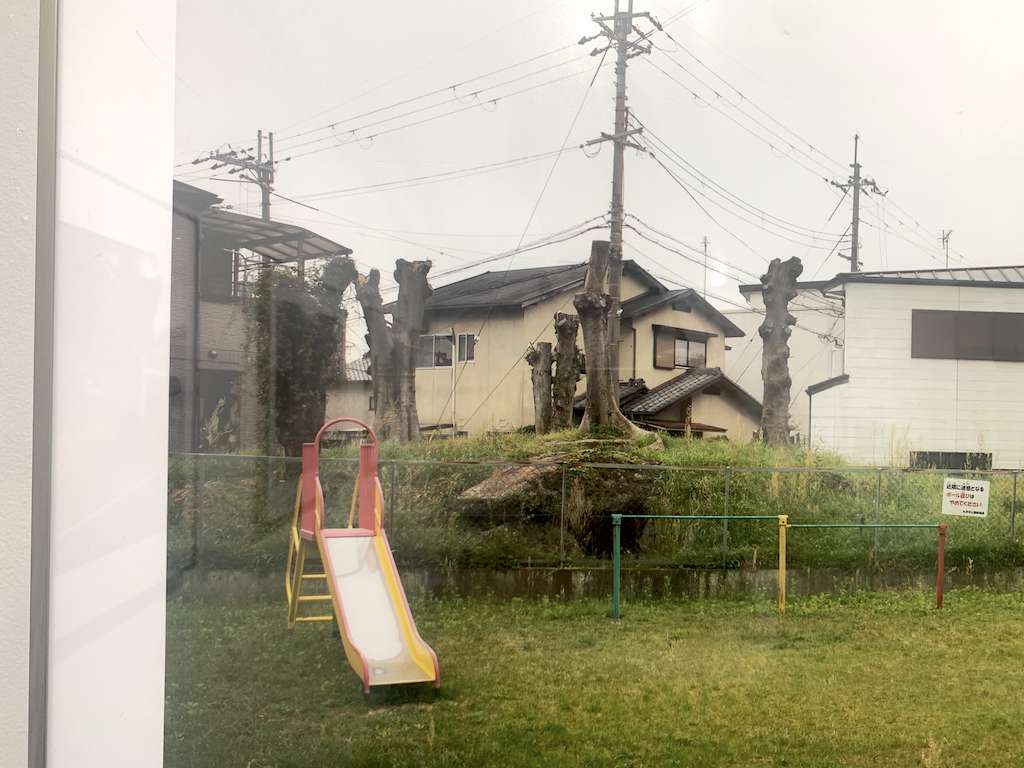
この中に眠る人々の名前と功績の多くは、すでに歴史から失われてしまいましたが、私たちは彼らがかつて指揮していた重大な任務を想像することはできます。過去を思い描くことは、未来を見通すことよりも簡単です。
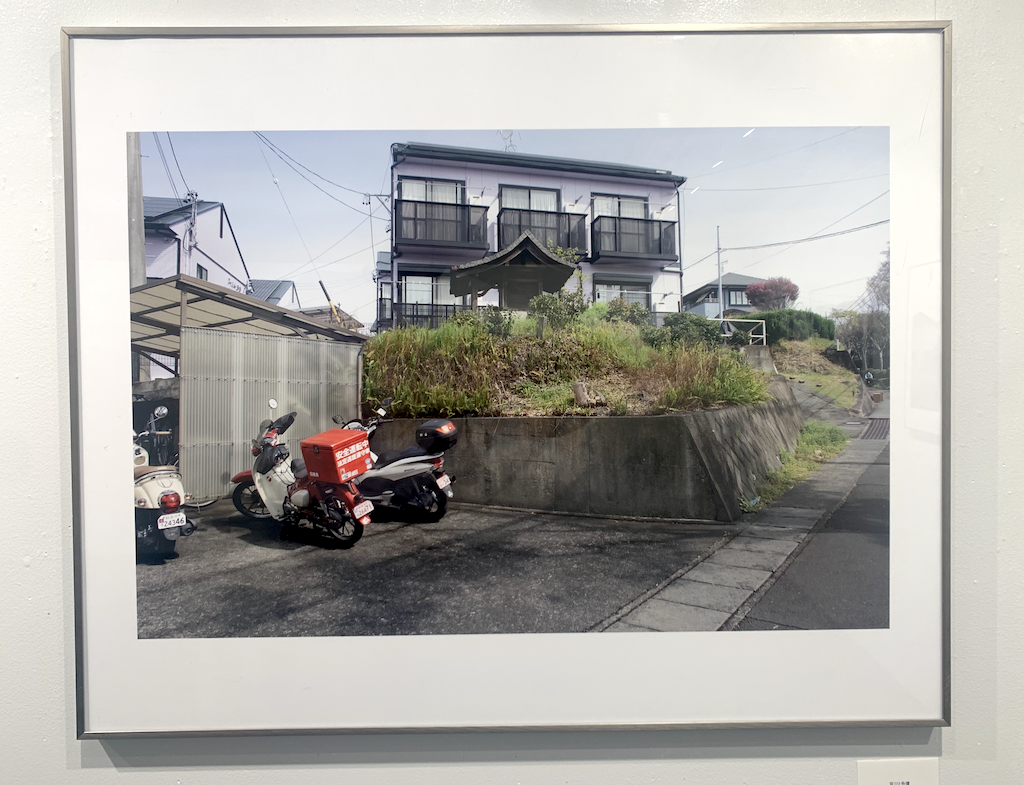
言い換えれば、これらの古墳を築いた人々や、埋葬した人々、埋葬された人々、弔った人々は、自分たちの古墳が地元の公園の遊具の片隅や、ラブホテルの看板の近くに追いやられることになるとは、考えもしなかったのではないでしょうか?
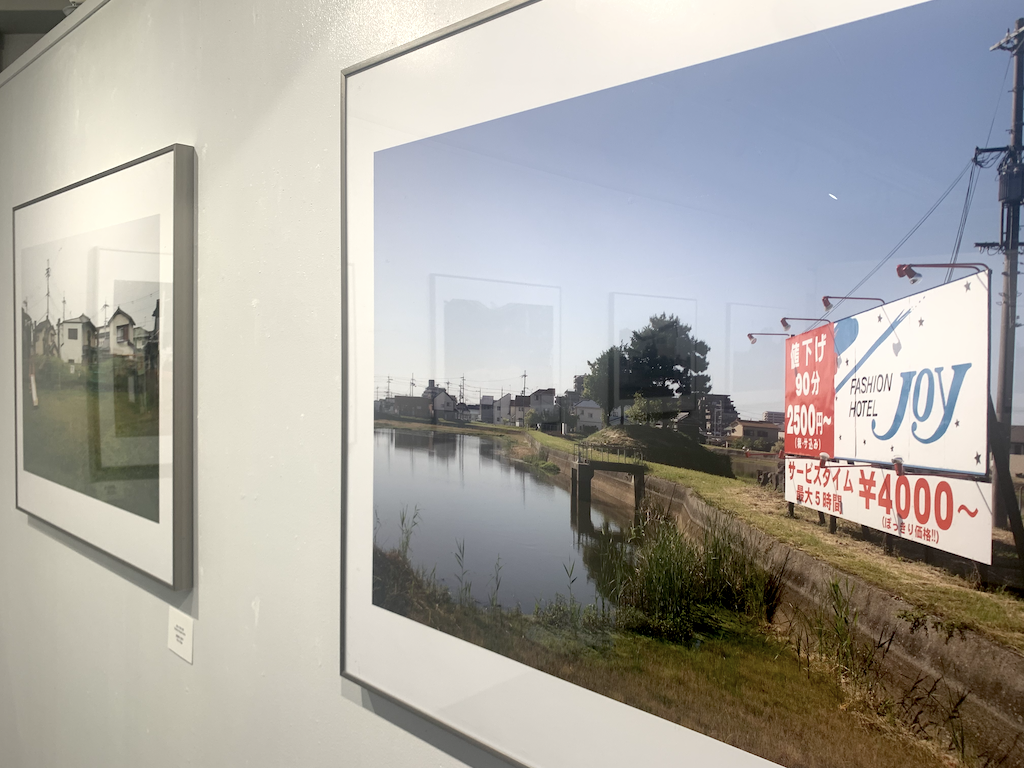
彼らはどう思うのでしょう…。そんなことはどうでもいいのでしょうか?これが西村の疑問のひとつなのでしょう。同時に、私たちの現在は残っていくだろうか、という問いも投げかけられているのです。
- 西村勇人 Hayato Nishimura
「Mounds」- 会期:2024年6月10日〜6月23日
- 会場:RED Photo Gallery
- https://photogallery.red/schedule/2024/20240610/exhibition.php
 Vol.41 中嶋琉平|Ryuhei Nakashima「Asia, New York, and Tokyo」、高地二郎|Jiro Kochi「GINZA: Through the eye of a Salaryman 1950-1990」
2025/11/08
Vol.41 中嶋琉平|Ryuhei Nakashima「Asia, New York, and Tokyo」、高地二郎|Jiro Kochi「GINZA: Through the eye of a Salaryman 1950-1990」
2025/11/08
 Vol.40 藤岡亜弥|Aya Fujioka「Life Studies」、荒木塁|Lui Araki 「Color/Scape」
2025/10/03
Vol.40 藤岡亜弥|Aya Fujioka「Life Studies」、荒木塁|Lui Araki 「Color/Scape」
2025/10/03
 Vol.39 榎本八千代|Yachio Enomoto「家族写真 / Family Photo」
2025/09/05
Vol.39 榎本八千代|Yachio Enomoto「家族写真 / Family Photo」
2025/09/05
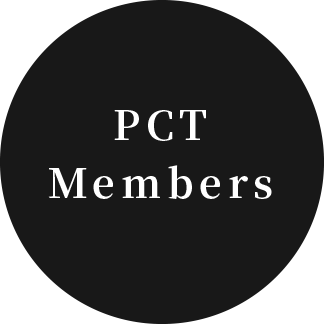
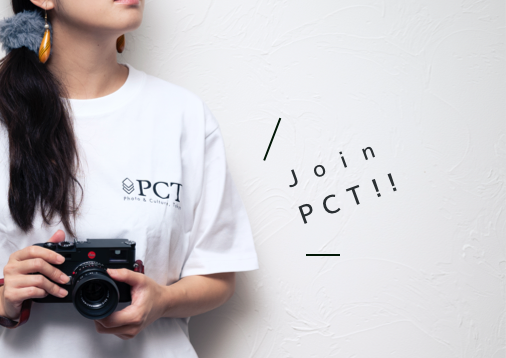
PCT Membersは、Photo & Culture, Tokyoのウェブ会員制度です。
ご登録いただくと、最新の記事更新情報・ニュースをメールマガジンでお届け、また会員限定の読者プレゼントなども実施します。
今後はさらにサービスの拡充をはかり、より魅力的でお得な内容をご提供していく予定です。
 「Photo & Culture, Tokyo」最新の更新情報や、ニュースなどをお届けメールマガジンのお届け
「Photo & Culture, Tokyo」最新の更新情報や、ニュースなどをお届けメールマガジンのお届け 書籍、写真グッズなど会員限定の読者プレゼントを実施会員限定プレゼント
書籍、写真グッズなど会員限定の読者プレゼントを実施会員限定プレゼント